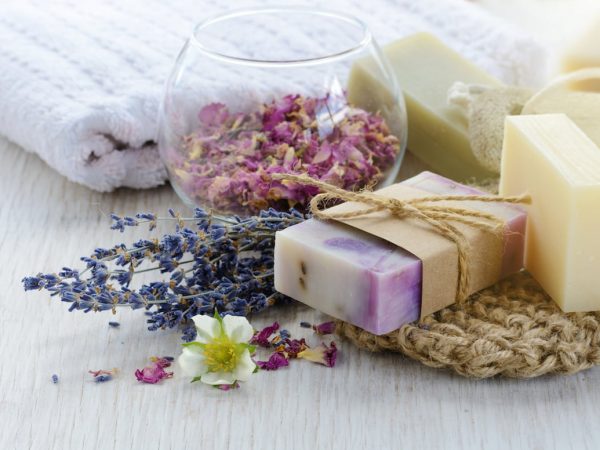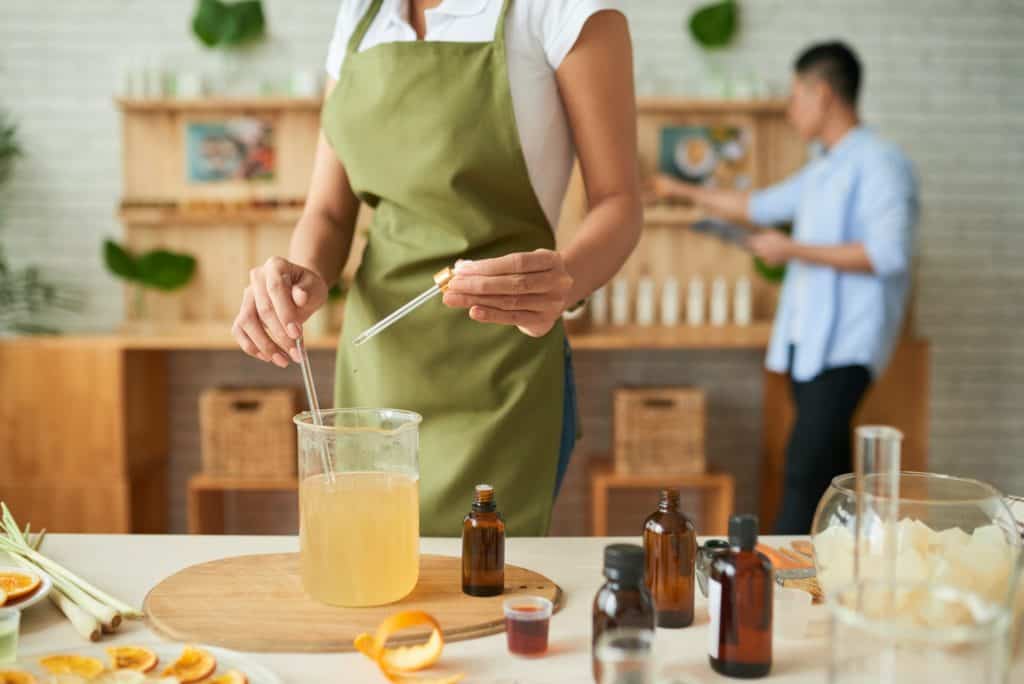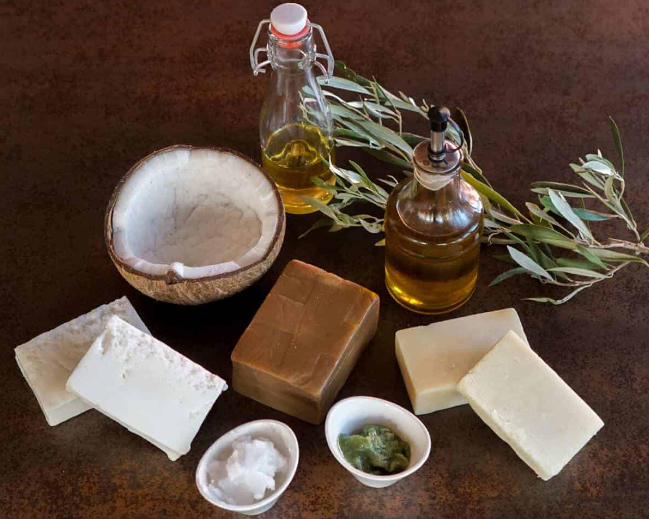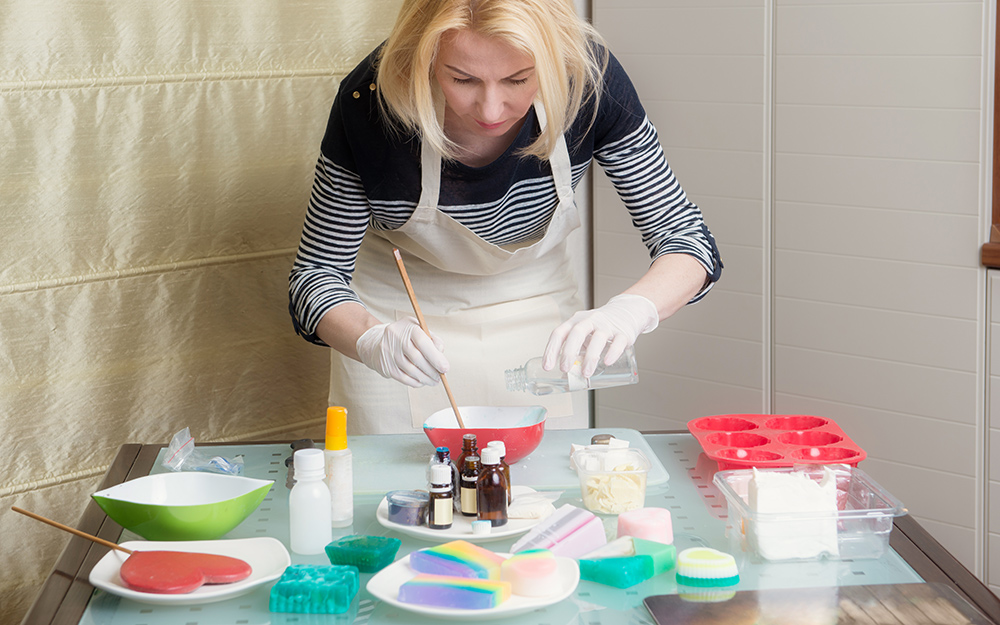02
Nov

The skin is our largest organ and, as such, requires a lot of care. We wash it, apply moisturisers and try to protect it from the sun as much as possible. Unfortunately, something as simple as our hygiene routine can affect it in significant ways.
Out of all the skin products we use, soap is probably the most applied one. We have so many options for different skin types that sometimes it’s hard to choose. But all of these soaps contain harsh chemicals that can be harmful to our skin in the long term. That’s why many consider making their own soap out of natural ingredients. It’s not a very difficult and time-consuming process and you’ll wake up with healthy and nourished skin every day.

Soap-making is a process where the two most important ingredients, oil and lye, bind together and make a compound called soap. This process is called saponification. If you’re tired of using the same chemical-filled soaps from the market, you should buy the basic soap-making ingredients, and enjoy your healthy skin.
You may remember someone else trying to make soap and having an unpleasant experience with lye. It’s a strong chemical that requires a lot of attention when you handle it. Every time you use it, it’s recommended to wear safety goggles, gloves and a shirt with long sleeves.
Remember to add the lye to the liquids. Don’t do it the other way around because you’ll get a volcano effect. However, you still need to be careful. When you pour the lye into any liquid, it gets hot fast, and fumes develop in a couple of seconds. Stay away from them and don’t inhale them directly. Make sure you work in an open space that has enough fresh air.
If you have any pets or children remove them from the room. If you get some on your skin, rinse with cold water repeatedly. But if you’ve got a large amount on your skin or the eyes, rinse it immediately and seek medical attention.
All of this may sound scary, but there are plenty of people who make soap every day and do not get hurt. All you need to do is handle the lye with caution.
When producing soap, distilled water is used to dissolve the lye through the oils and activate it. The bars will lose the majority of this water during the curing process. So, your finished bars can be a little bit smaller than they were when you originally removed them from their moulds.
When making soap, avoid using tap water or spring water because they contain minerals that’ll interfere with the soap’s longevity. When you’re a beginner, stick to the right amount of water from the recipe you have. After a while, you can experiment.

Any type of oil or fat will do in the soap-making process. Most soap formulas call for 3-6 oils, but you can use as many as you want. There aren’t as many single-oil soaps because they won’t perform their function best. Combining oils will give your soap different properties such as conditioning, lather, hardness and creaminess. The most common oils and fats are:
Some oils and fats can oxidise and go rancid because of ingredients whose expiring date is near and because of not using distilled water. To prevent this from happening, you should use antioxidants.
There are 2 main types of antioxidants soap makers use. The first one is grapefruit seed extract. It’s extracted from the seeds of grapefruits and is thick and clear. It’s also unscented and very effective. The second one is rosemary oleoresin extract. Manufacturers extract it from rosemary leaves and it has a strong smell.
While some people prefer the natural scent of the soap, others use essential oils to give it a specific smell. Essential oils smell nice but can be expensive and fade in time. Cosmetic oils on the other hand will last longer and are fairly inexpensive. But they’re synthetic, and if you want to make the soap all-natural, it won’t work.
Scent fixers help you keep the scent of essential oils. It’s an optional ingredient and not everyone uses it. The most common scent fixers are:
If you don’t want plain and boring white soap bars in your bathroom, you can add natural colourants. Some of your oils may add colour, or you can add natural clay. Sugar, milk and honey can caramelise the soap, and herbs, roots and flowers are great for more vivid, bright colours. Mineral pigments (used in make-up) are also a good option.

There are 2 main methods for making soap. The first one is the melt-and-pour process. This is a simple, safe and convenient way to do it. You buy the base from a craft store or a soap supplier, so you won’t have to deal with lye. Cut it into smaller pieces and melt it in the microwave or a double boiler in sequences of 30 seconds. When it’s completely melted, add the fragrance and colours and pour it into a mould to harden it.
The second process is called the cold method and it’s a little more complicated. In this case, you’ll have to handle the lye. Heat the oils until they reach around 40 degrees Celsius. Gently add the lye-water mixture and mix until it blends nicely and thickens to trace. After that, add the rest of the soap-making ingredients of choice, colour, fragrance and antioxidants.
Pour it into a mould and wait for at least 24 hours to harden. You can use that bar of soap after a few weeks. This method will require more bowls, more cleaning and equipment such as measuring cups, kitchen scales, spatulas, thermometers etc. Make sure the place where the soap cures for a few weeks is cool and dry. You can experiment with so many ingredients and create goat milk soap, citrusy blends, tea soaps and even something to get rid of acne.
When you’re using homemade soap ingredients, your body can benefit in many ways. First, you’re not coming in contact with harmful chemicals and synthetics such as parabens, phthalates, petrochemicals and phosphorus. The natural fats will hydrate and moisturise the skin. You can customise it and make it according to your needs. Plus, it’s very cost-effective and fun. You’ll enjoy using something you’ve made yourself.